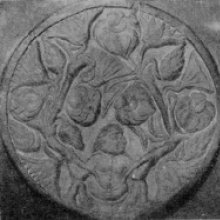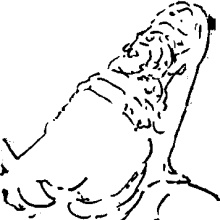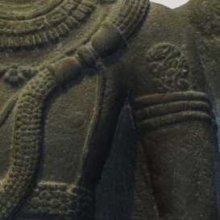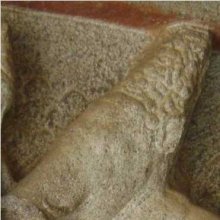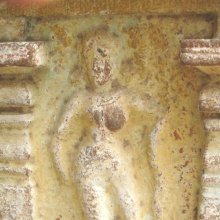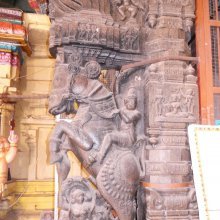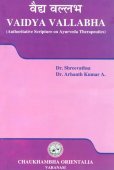Creeper: 2 definitions
Introduction:
Creeper means something in Hinduism, Sanskrit, biology. If you want to know the exact meaning, history, etymology or English translation of this term then check out the descriptions on this page. Add your comment or reference to a book if you want to contribute to this summary article.
Images (photo gallery)
(+5 more images available)
In Hinduism
Vastushastra (architecture)
Source: Shodhganga: Elements of Art and Architecture in the Trtiyakhanda of the Visnudharmottarapurana (vastu)If Creepers are found on Trees, then it should not be used for gathering Wood as a Material for the Construction of Temples, according to the Viṣṇudharmottarapurāṇa, an ancient Sanskrit text which (being encyclopedic in nature) deals with a variety of cultural topics such as arts, architecture, music, grammar and astronomy.—Finding of proper types of materials is one of the important aspects for any construction. In the Viṣṇudharmottarapurāṇa, the architect is suggested to go to the forest to collect appropriate wood for temples in an auspicious day after taking advice from an astrologer. The woods of the trees [e.g., which bear creepers, etc.] are totally discarded for making temples. [...] The eco-friendly suggestions of Viṣṇudharmottarapurāṇa are seen to protect the greenery and to balance a pollution free environment.

Vastushastra (वास्तुशास्त्र, vāstuśāstra) refers to the ancient Indian science (shastra) of architecture (vastu), dealing with topics such architecture, sculpture, town-building, fort building and various other constructions. Vastu also deals with the philosophy of the architectural relation with the cosmic universe.
Biology (plants and animals)
Source: Google Books: CRC World Dictionary (Regional names)Creeper in English is the name of a plant defined with Ampelopsis glandulosa in various botanical sources. This page contains potential references in Ayurveda, modern medicine, and other folk traditions or local practices It has the synonym Vitis brevipedunculata (Maxim.) Dippel (among others).
Example references for further research on medicinal uses or toxicity (see latin names for full list):
· Mémoires de l'Academie Imperiale des Sciences de St. Petersbourg St.-Pétersbourg Divers Savans (1859)
· Journal of Ethnopharmacology (1997)
· Abhandlungen der Mathematisch-Physikalischen Classe der Königlich Bayerischen Akademie der Wissenschaften (1845)
· Trudy Imperatorskago S.-Peterburgskago Botaničeskago Sada (1883)
· Journal of Japanese Botany (1977)
· Bijdragen tot de flora van Nederlandsch Indië (1825)
If you are looking for specific details regarding Creeper, for example extract dosage, pregnancy safety, health benefits, side effects, diet and recipes, chemical composition, have a look at these references.

This sections includes definitions from the five kingdoms of living things: Animals, Plants, Fungi, Protists and Monera. It will include both the official binomial nomenclature (scientific names usually in Latin) as well as regional spellings and variants.
See also (Relevant definitions)
Ends with (+4): Bladder creeper, Bridal creeper, Bridal-veil creeper, Burma creeper, Caustic creeper, Chicken-dung creeper, Chinese creeper, Chinese moon creeper, Elephant creeper, Emerald creeper, Flame creeper, Hiccough creeper, Japanese creeper, Malu creeper, Marvel creeper, Messina creeper, Orange grape creeper, Potato creeper, Railway creeper, Rangoon creeper.
Full-text (+2455): Valli, Lata, Vratati, Lavali, Latika, Kalpalata, Madhavi, Madhavilata, Pundraka, Gandhabhadra, Atimukta, Bhrulata, Vallari, Pundarya, Virudh, Pratana, Badalata, Galoci, Sonavela, Latagriha.
Relevant text
Search found 192 books and stories containing Creeper; (plurals include: Creepers). You can also click to the full overview containing English textual excerpts. Below are direct links for the most relevant articles:
Amarakoshodghatana of Kshirasvamin (study) (by A. Yamuna Devi)
Flora (2): Basic Classification of Plants < [Chapter 5 - Aspects of Nature]
Flora (3): Parts of the Plants < [Chapter 5 - Aspects of Nature]
Flora (6): Creepers < [Chapter 5 - Aspects of Nature]
Manusmriti with the Commentary of Medhatithi (by Ganganatha Jha)
Verse 9.230 < [Section XXXI - Miscellaneous Punishments]
Verse 8.369 < [Section XLVI - Adultery]
Verse 4.130 < [Section XIV - Other Duties]
Brihad Bhagavatamrita (commentary) (by Śrī Śrīmad Bhaktivedānta Nārāyana Gosvāmī Mahārāja)
Verse 1.6.110 < [Chapter 6 - Priyatama (the most beloved devotees)]
Verse 1.5.24 < [Chapter 5 - Priya (the beloved devotees)]
Verse 2.4.139 < [Chapter 4 - Vaikuṇṭha (the spiritual world)]
Trishashti Shalaka Purusha Caritra (by Helen M. Johnson)
Part 11: A spring festival < [Chapter II]
Part 7: Ṛṣabha’s marriage < [Chapter II]
Part 1: Previous incarnations of Sanatkumāra as King Vikramayaśas and of Asitākṣa as Nāgadatta < [Chapter VII - Sanatkumāracakricaritra]
Ramayana of Valmiki (by Hari Prasad Shastri)
Chapter 41 - Hanuman destroys the Ashoka Grove < [Book 5 - Sundara-kanda]
Chapter 14 - Sugriva again challenges his brother to fight < [Book 4 - Kishkindha-kanda]
Chapter 14 - The Ashoka Grove < [Book 5 - Sundara-kanda]
Sahitya-kaumudi by Baladeva Vidyabhushana (by Gaurapada Dāsa)
Text 10.36 < [Chapter 10 - Ornaments of Meaning]
Text 4.51 < [Chapter 4 - First-rate Poetry]
Text 10.216 < [Chapter 10 - Ornaments of Meaning]
Related products
